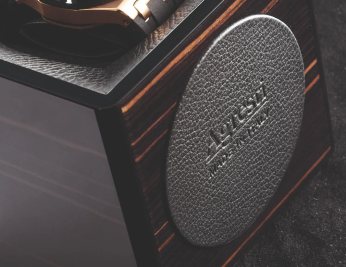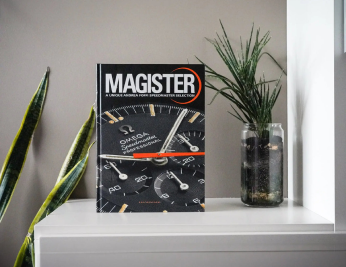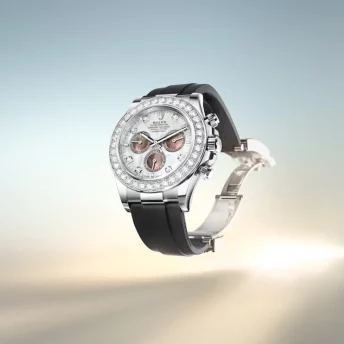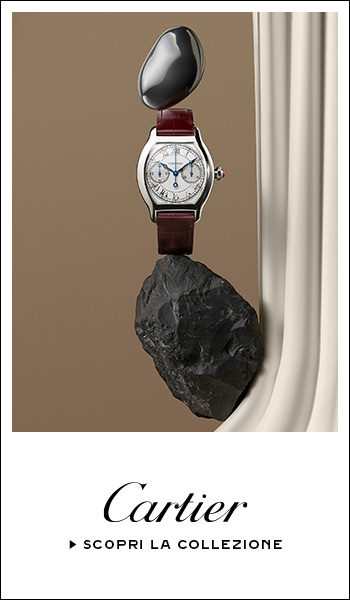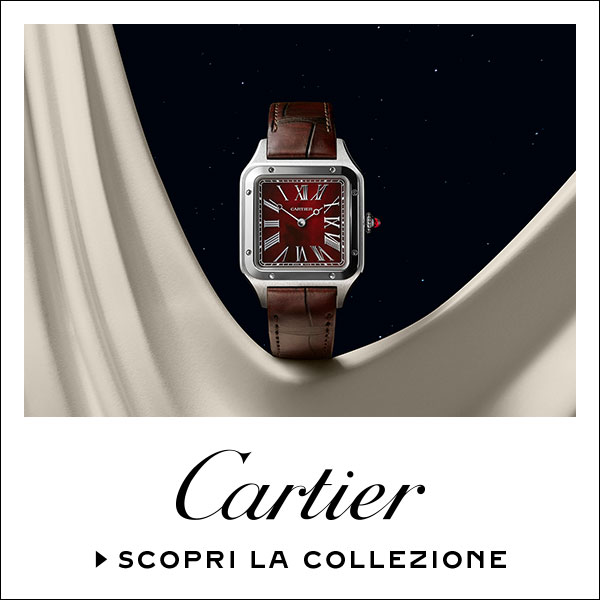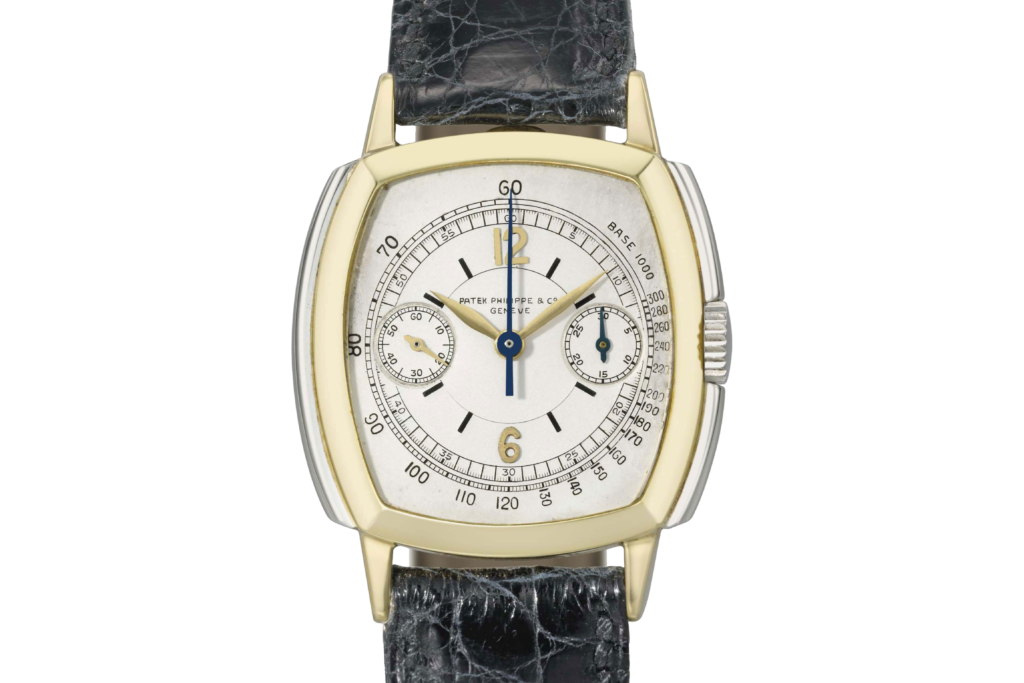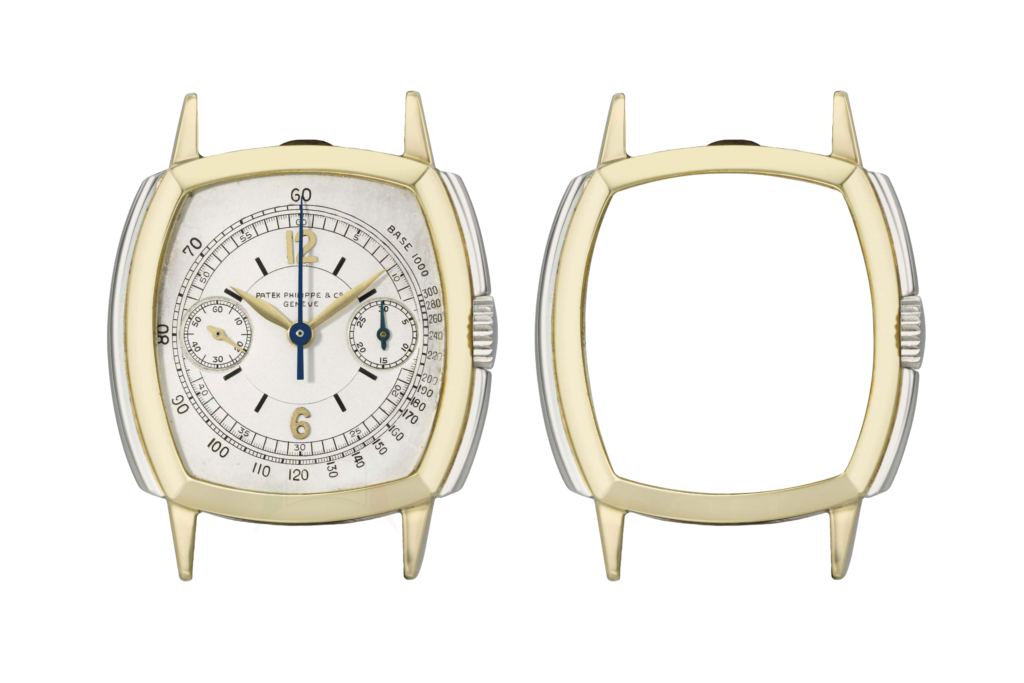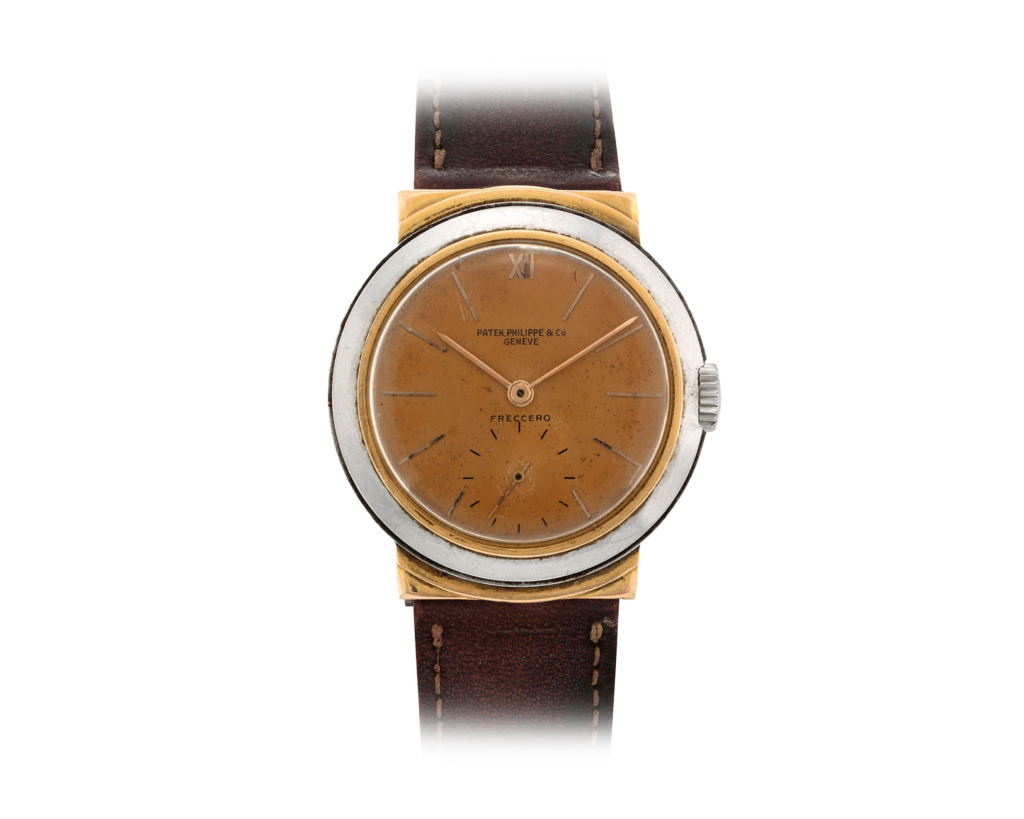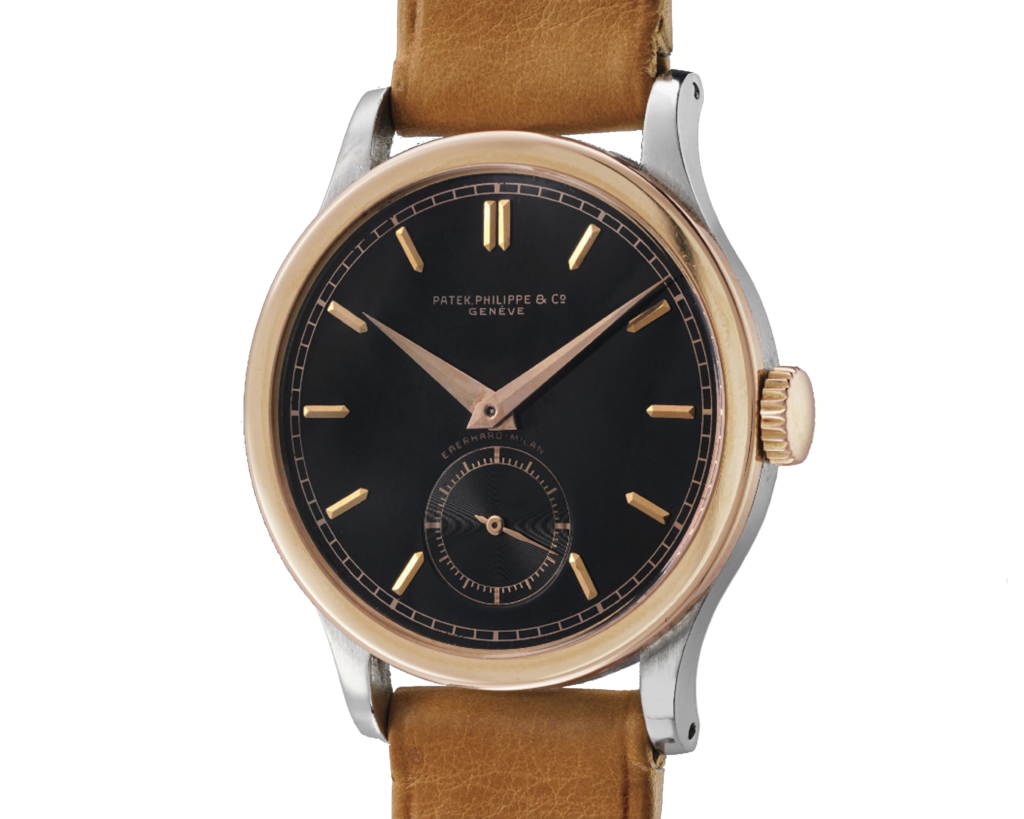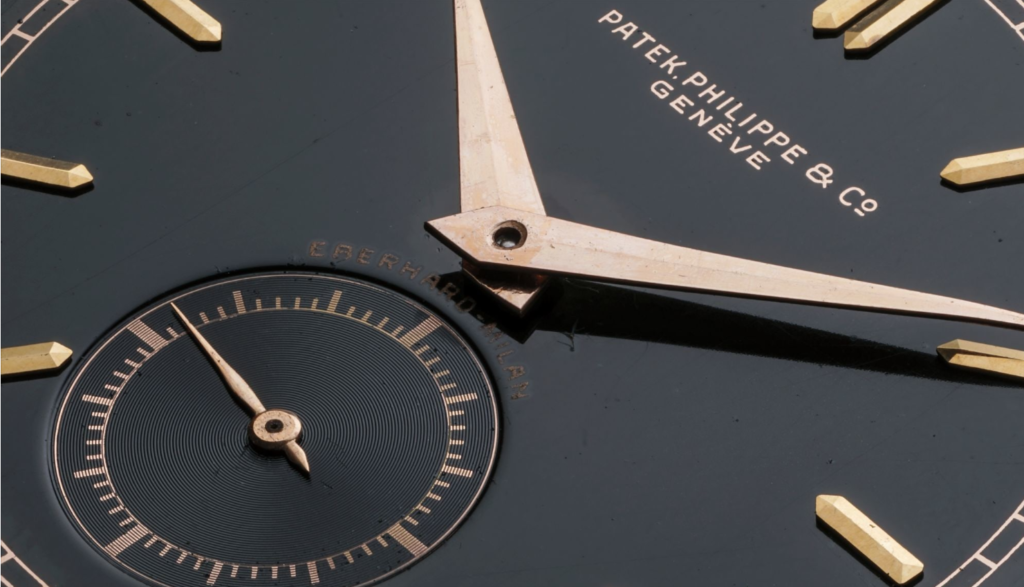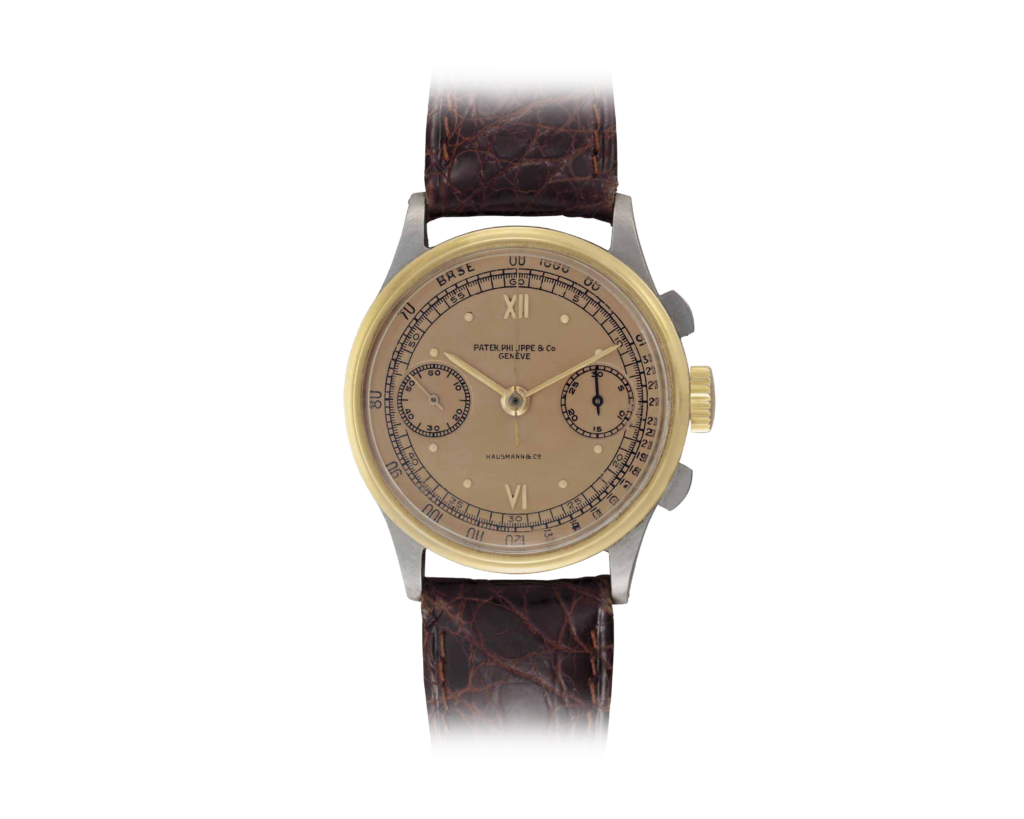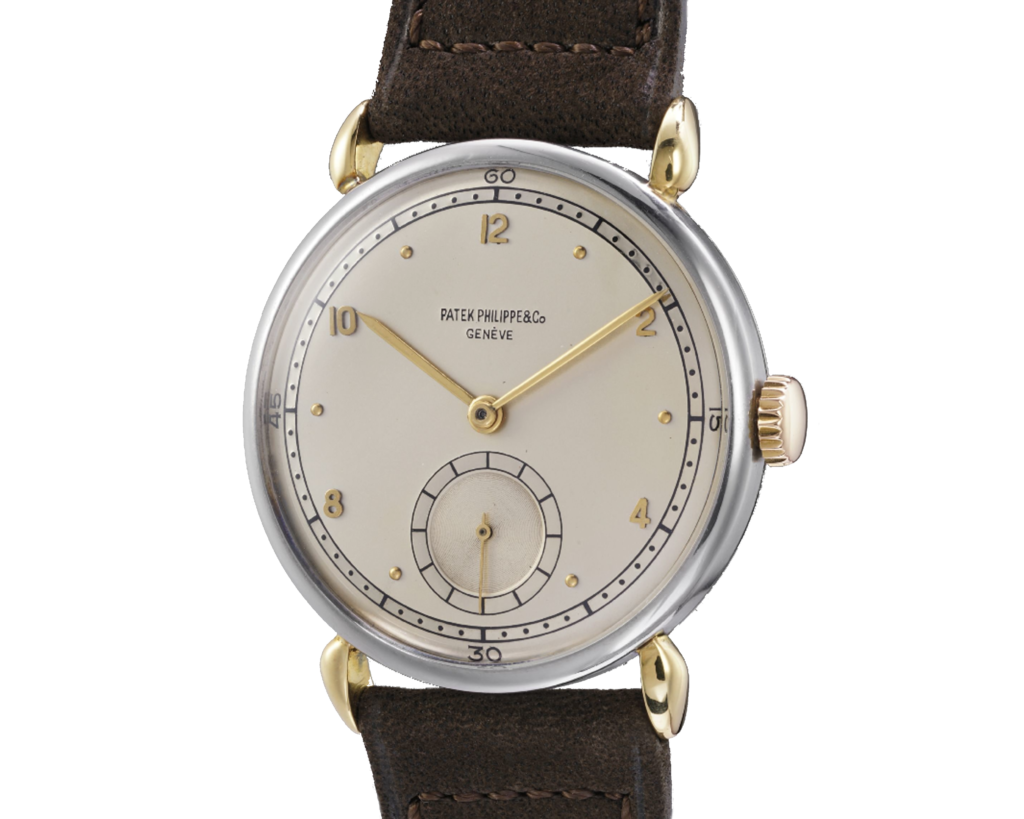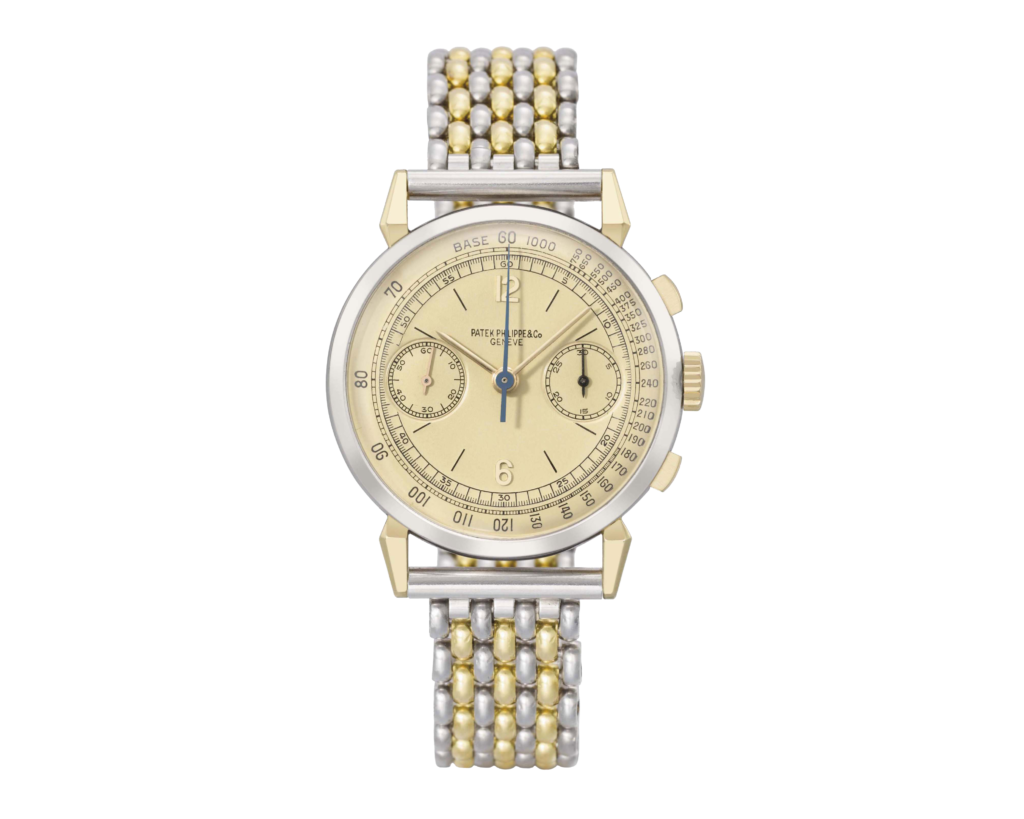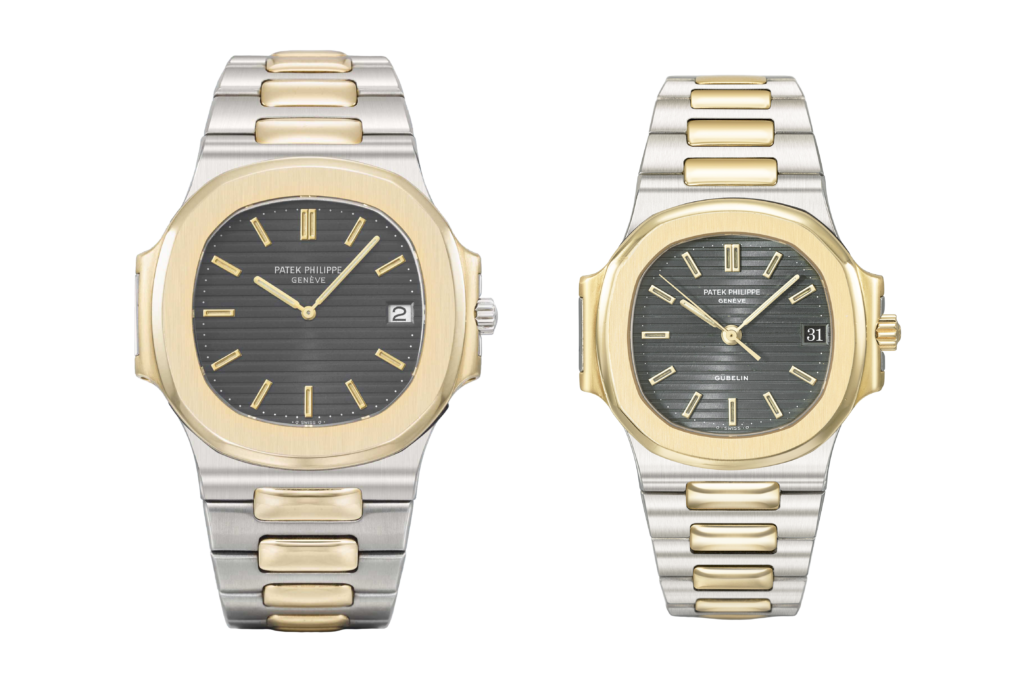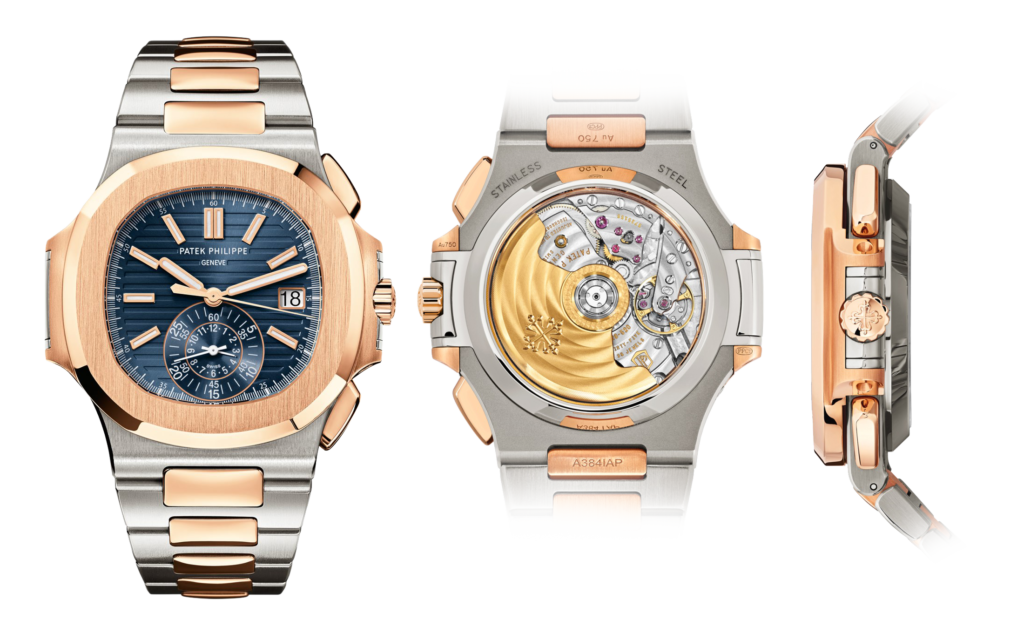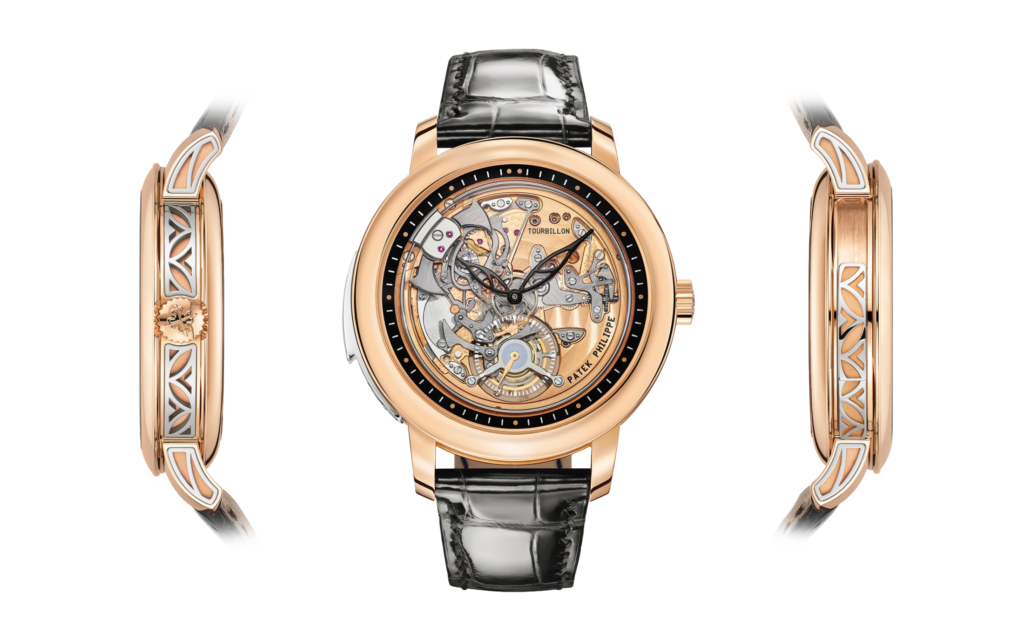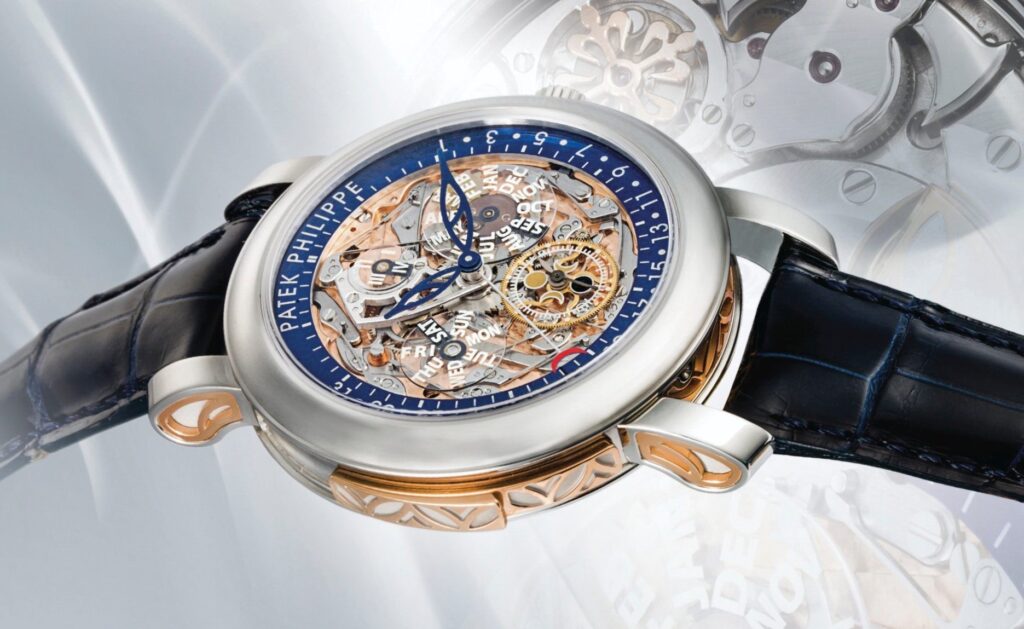Gold and platinum, yellow with white gold, steel and gold… these are some of the most underappreciated watch material combinations that are on the market today. This two-tone juxtaposition has won over just as many collectors as it has put off. However, when it comes to Patek Philippe, steel and gold timpieces are phenomenons in their own right, ammassing incredible followings.
This IWS Guide is a progression from our first one about the legend of steel Pateks. Now, it’s the bi-metal combination’s turn.
The First One (well, almost)
This first two-tone Patek Philippe timepiece dates all the way back to 1936. Although it wasn’t in the now famous steel and gold combination, the first bi-metal case was made from platinum and yellow gold.
The watch before you is packed full of history. In Patek’s 170 year lifetime, this is the only monopusher chronograph made from these two materials. Not only that, but it also features the smallest-sized movement with this complication.
Its 32mm “cushion” case and the arrangement of the two metals is quite peculiar: if you look closely, you’ll notice that the front of the case is is totally yellow gold, with platinum only making a subtle appearance on the sides. The pusher which operates the chronograph is at the 12 o’clock position – barely visible.
Christie’s auctioned this timepiece to the tune of CHF 723,000 , nearly 200,000 more than its estimate (CHF 350,000 – 550,000).
Mass production of steel and gold Patek Philippe watches begins
As the years went by, different types of steel and gold combinations were employed on Patek Philippe timepieces. From the Calatrava to our beloved chronographs, the most prevalent configuration was actually with rose gold (not yellow).
One of the most common models that had this steel and rose gold case was the ref. 544. In fact, it was so popular that it was “mass” produced, and not simply special one-off orders. However, the exemplar below is far from common: it is the only one with a pink-ish dial and a Freccero double-signature. Freccero, of course, was one of the most famous South American Patek Philippe distributors, based in Montevideo, Uruguay.
Below is the better known ref. 570, a model which represented a huge increase in Patek Philippe’s dimensions department. The first Calatrava – the ref. 96 – measured 31mm in diameter, and the 570 clocked in at 36.5! That’s still quite small by today’s standards, but back then, this was a very large step up. The one pictured here belonged to the renowned collector and CEO Gordon Bethune.
The cherry on top? Aside from the very tastefully done steel and rose gold configuration, the black lacquered dial features an “Eberhard Milan” double-signature. Back then, Patek was quite liberal with their double-signatures, allowing many clients to get theirs stamped with their authorised dealer. In this case, the timepiece belonged to a client based in Milan.
If you are unfamiliar with the concept of double-signed dials, read our guide.
Phillips acutioned this piece for CHF 444,500 , agreeing with the estimate of CHF 250,000 – 500,000. Not bad for a steel and gold Patek Philippe, huh?
Now, on to the famed chronographs.
The first Patek Philippe chronograph to be encased with a steel and gold combination (rose) was the ref. 130. It is believed that no more than 10 exemplars have appeared on the market, and even fewer featuring this special Hausmann & Co. double-signed dial. This reference not only made Patek Philippe history, but is widely regarded as one of the greatest chronographs of all time.
The exemplar below (1942) was auctioned by Christie’s for $212,500 USD (estimate of $150,00 – 250,00 USD).
The last exemplar from this era
The last known exemplar from this era dates to 1948. It features a predominantly steel case, with yellow gold making an appearance in the form of teardrop lugs. The piece as a whole is very unassuming, and the chromatic contrast is very elegantly done. Although it didn’t reach astronomical hammer prices, this piece was auctioned for CHF 45,000 – way more than its modest CHF 18,000 – 28,000 estimate.
The watch which made us want to write this guide: the steel and gold 1579/1
To this day, not many people know about the mere existence of this watch. First mentioned in John Goldberger’s 2010 publication “Patek Philippe Steel Watches”, it introduced a whole new world to many collectors.
It is widely agreed that only two 1579/1s exist, one of which was sold by Christies in 2011:
What makes it so unique and beloved by collectors? The picture speaks for itself, really: champagne dial, “spider” lugs, the steel and yellow gold Gay Fréres bracelet… it’s a truly spectacular timepiece.
Fast forward from the 30s-40s to the Nautilus: steel and gold models between 1976 and 2000
Although it was first introduced in 1976, the first Patek Philippe Nautilus to feature a steel and gold case construction arrived 4 years later with the 1980 reference 3700/11AJ.
(Quick bit of trivia: the A stands for “Acier” – steel, in French – and the J presumably stands for Jaune – yellow)
Just one year later, the 3800 was introduced – characterised by its slightly smaller, 37.5mm stature.
Steel and gold on Patek Philippe’s Nautilus is something a little different. The combination appears a lot heavier and it’s more visible than the previous cases. The aforementioned bracelet of the 1579 has an incredible charm, but we can’t say the same for here.
The Patek steel and gold market has skyrocketed lately, and we can see a huge price-increase here, too. Today, a 3700/1AJ can be found for a figure between €65-75,000, while a 3800/1AJ for 25-30 thousand.
The increase, if you think about it, was crazy. Up until 2017, a steel and gold 3800 was around €8-10,000… that’s a +240% in 3 years. Likewise, a 3700 could have been purchased for €25-30,000, and was subject to a +200% price increase.
Modern steel and gold Patek Philippes: 2005 to 2021
By the 21st century, the steel and gold configuration had disappeared from the Calatrava collection, but some steel and rose gold models remain in the Nautilus line.
That being said, Patek reserves this steel and gold configuration only for Grande Complications and “very special” timepieces.
And even then, you might not even notice it! Why?
Patek opted for a much more low-key approach when it comes to bi-metal case construction: you won’t see a clear contrast on the case’s front, but rather a much more sublte change on the sides… but with no less Patek Philippe artisanal mastery.
In closing
We hope that this guide has either opened your eyes to steel and gold watches, or that it has changed your opinion of them! If not, we certainly hope that you are now at least aware of their historical significance.
-Translated by Patrick R.

